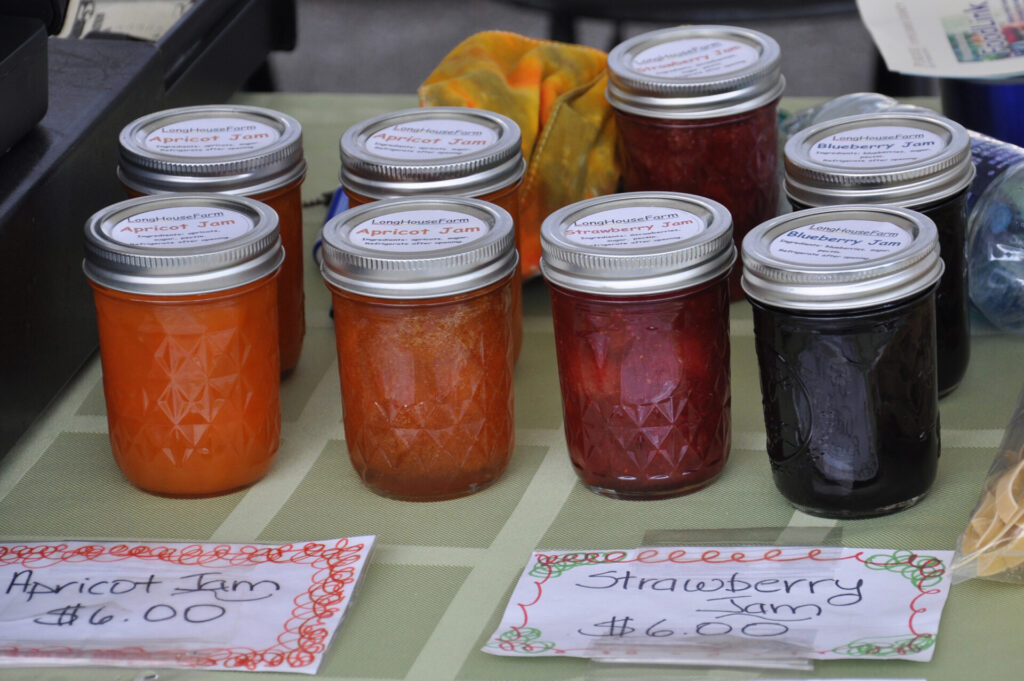As produce bounties are harvested this summer, many growers may explore options to transform excess perishable products into value-added goods such as baked goods, jams and jellies, and more. Current Indiana regulations allow individuals to make certain products in their home kitchen and sell those direct-to-consumer as a home-based vendor (HBV). However, there are several products that carry an inherent food safety risk that cannot be made in someone’s home and sold by an HBV.

Figure 1: Jam for sale at a farmer’s market. Photo copyright 2016 Purdue University College of Agriculture.
In Indiana, home-based vendors are NOT permitted to make or sell foods that have been identified as time/temperature control for safety (TCS). While Indiana has previously identified foods as TCS or non-TCS, there are many food products that are not clearly defined, creating confusion surrounding which products are approved for HBV production. To provide clarity and scientific support on this topic, Purdue University conducted a study on a series of commonly produced HBV products to determine their food safety profile.
A team of Purdue researchers prepared food products and investigated the intrinsic properties of finished potential HBV products, specifically to identify their water activity and pH, to determine if pathogen growth was supported. In food science, it is recognized that pathogens cannot grow in a food if the water activity (Aw) is less than 0.85 or the pH is below 4.6. For some products that undergo a kill step, internal temperature data were collected and compared to lethality temperatures for the microbes of concern. The team also looked at properties that may impact legality, such as the alcohol content in applicable foods. Finally, researchers investigated the oxygen permeability of different packaging materials to determine which materials can safely be used by HBVs.
During the study, researchers aimed to capture the pH and Aw variabilities that could result while using certain ingredients or different recipes. For example, researchers were interested in whether fruits such as apples of different varieties or ripeness could impact the final product’s pH.
To summarize the findings and recommendations from this research, the Indiana Department of Health recently published the Indiana Home-Based Vendor Handbook in partnership with Purdue University and Health First Indiana. With the integration of academic resources and state laws, this handbook is intended to serve as a comprehensive guide to identify food products that can be safely prepared and sold within the State of Indiana under Home-Based Vendor (HBV) Regulations. This handbook also outlines other requirements for HBVs, including sanitary procedures, labeling, food safety training, and where products can be sold.
If HBVs have questions regarding allowable products, they should contact the local health department in the county where they intend to sell the product. Questions may also be submitted to the Indiana Department of Health (IDOH) Retail Food Program by emailing retailfoodprogram@health.in.gov. Questions related to product formulation, testing, and potential projects can be directed to Purdue’s Food Entrepreneurship and Manufacturing Institute (FEMI) by emailing femi@purdue.edu.